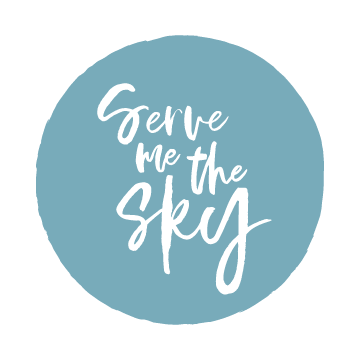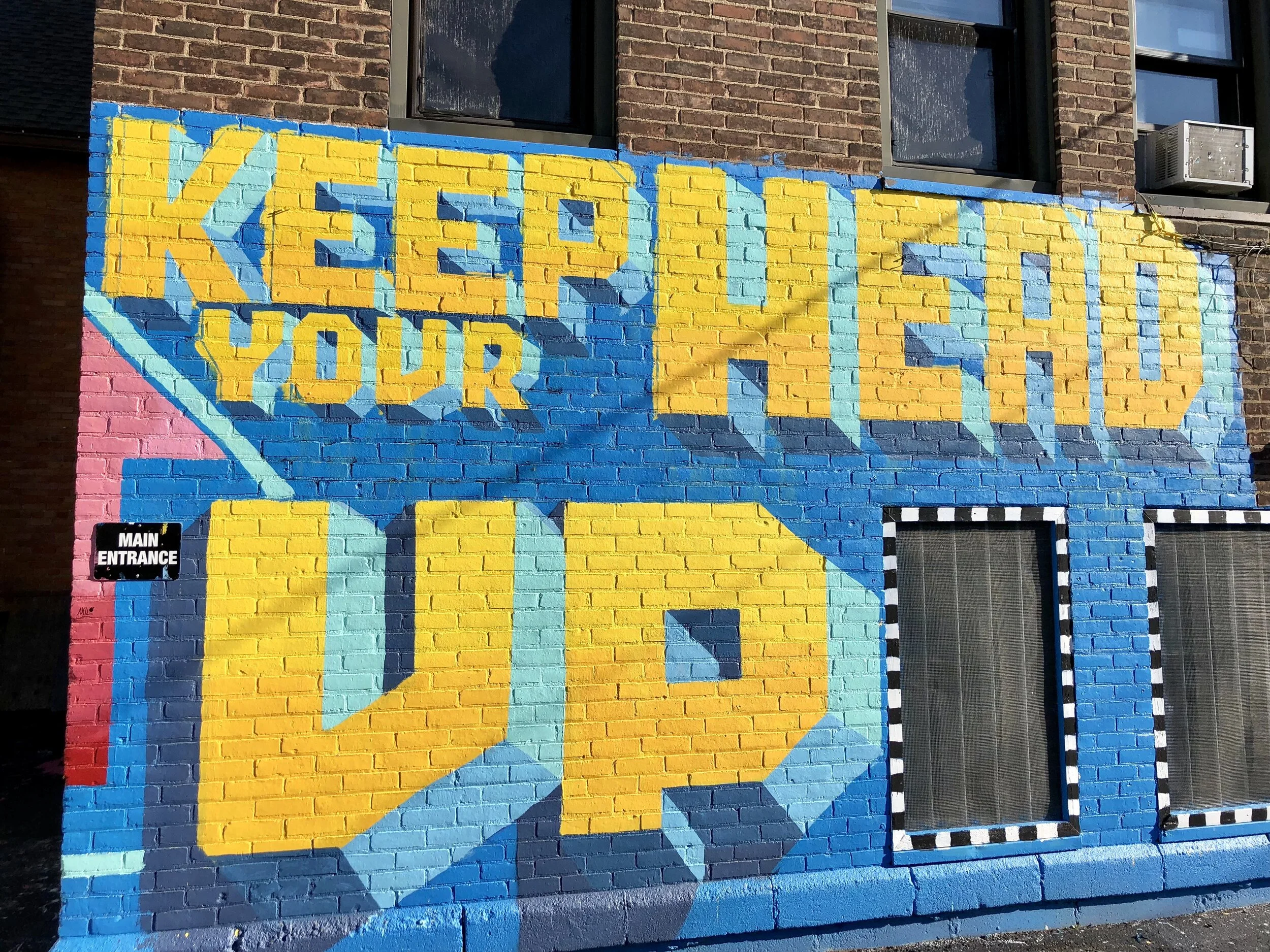What I Learned in My First Year on a Nonprofit Board
/Artwork by Shawn Dunwoody at Cameron
About one year ago, I nervously headed to my first Board meeting at Cameron Community Ministries. I had no idea what to expect. I’d met with the Executive Director and Board Chair in December and they were eager to have me. All I needed to do was fill out a form. They voted me in at the January meeting, and I was told to show up on a cold Monday night in February for my first meeting. Now that I’ve been on the Cameron Board for one year, I wanted to share a bit about my journey, advice I’ve gotten, what I’ve worked on, and what I’ve learned.
Why did I want to join a nonprofit board? And why Cameron?
Honestly, one of the first reasons I started thinking about it was that it seemed like many of my friends were on boards. I was talking to a former coworker and said, “What the heck? I should totally be on a board! Why has no one asked me? How do you get on one?” He told me, “I think you just have to ask.” So I asked! The rest is history.
Why did I gravitate towards Cameron? I first volunteered at Cameron with my church youth group when I was 16 years old, delivering Christmas gifts and decorating the K-6 after-school space for the holidays. Growing up in Pittsford, I led a sheltered life and never realized how privileged I was. When I was exposed to Cameron in the Lyell-Otis neighborhood, I was shocked. I had no idea that poverty like this existed just 20 minutes from my home.
After college, a dear friend of mine worked at Cameron in an administrative role and kept me in the loop about their needs. I brought my office to volunteer on our annual day of service; I interviewed the Cameron team for I Heart ROC to get them some publicity; I organized a toy drive in partnership with Ugly Duck Coffee; I brought I Heart ROC folks together to cook a meal in the soup kitchen.
Once you get to know Cameron, it has a homey feel. The people are friendly, there’s never a shortage of ways to help, and they shower you with gratitude for whatever you’re able to do. Over time, I started to feel the urge to help out in a more substantive way. That’s when I reached out to see if they could use me on the board.
Advice from Friends
Before heading to my first board meeting, I asked on social media: what advice would you give to someone who has just joined a nonprofit board for the first time? I got some great responses, so I wanted to share them here.
Listen & ask questions.
Many people emphasized how important it is to listen. “I find it useful to ask a lot of clarifying questions...I try to listen a lot before I say much on a given item and to keep my statements clear and concise,” Joshua Murphy told me. I love his point about asking plenty of questions and building a foundation of listening before speaking up.
Speak up.
Danielle Abramson Swartz reminded me, “don’t be afraid to speak up.” This was crucial for me to hear! I walk a fine line between introversion and extroversion and sometimes struggle with speaking up in group settings. So many people told me to listen, and I did! But I also kept reminding myself that they asked me to be there because I have something valuable to add, so I’d better speak up and share my knowledge and perspective.
Find your fit and use your talents.
This was a good one from the super smart Amy Ventura: “find the unique ways in which you add value.” After just a few meetings, it became apparent that the board was lacking experience in marketing and all things digital. My exact area of expertise! I stepped into the role of marketing committee chair, which also brought me onto the development committee so we could work hand in hand. It was the perfect way to put my knowledge to use.
Connect with the people the organization serves.
The kind and creative Jamison Clark shared some wisdom that I really appreciated: “Try and connect with the people that the nonprofit is for in order to bring their needs to the board.” Cameron serves kids K-6 in an after school program, teens in our new Teen Center, and adults in the soup kitchen, clothing house, and with a social worker. It’s a diverse audience and I don’t get a lot of facetime with all the people we serve. I’ve made an effort to show up and volunteer rather than just attending meetings. I attended the Peace Walk last June, where the kids march through the neighborhood protesting violence. I also volunteered in the community garden twice, which was so much fun. I’m still working on following this advice, but the board as a whole is making a concerted effort to get input from the people we serve so we can prioritize their needs and work strategically.
A long day of sod-laying in the community garden
Shake it off.
Brian Halligan told me, “Have strong opinions, but don’t take any disagreements home with you.” I haven’t been in any heated arguments, but sometimes there’s an idea or an approach I don’t quite agree with. I’ve learned to pick and choose my battles, determining where it makes the most sense to spend my energy rather than squandering it when minds can’t be changed.
What I’ve Worked On
It’s been an energizing and fun first year on the board. I’m trying to be cognizant of how much time and energy I’m investing so I don’t burn out, but sometimes that’s hard to do when you’re enjoying the work! In addition to serving on the Board, I’m also now on the executive committee (I stepped into the Vice Chair role on the Board in January 2020), I chair the marketing committee, and I serve on the development committee as well. Here are a few of the things I worked on over the past year:
Crafted a pro bono digital marketing strategy.
Connected Cameron with a graphic designer who created a much-needed new logo.
Organized three third-party fundraisers.
Worked on a fundraising communications plan with Causewave.
Covered our Teen Center ribbon cutting event on social media.
Developed a social media campaign to focus on gratitude over Thanksgiving season (#CameronSaysThanks).
Coordinated a book drive that collected 95 books for a new Teen Center library.
My Takeaways
I’ve learned a lot my first year and am excited to keep learning! Here are a few of my takeaways:
Color palette selected by Cameron teens
The logistics of how a board operates- calling a meeting to order, making/seconding motions, voting, etc.
What a board actually does- at Cameron, there’s a lot of information sharing and some discussion, with the board voting on important decisions. As a board, we try to empower the right people to make decisions too. For example, with the Teen Center, the teens were allowed to pick the color palette for their space, then we voted to approve them. Why should adults pick the color scheme for a space we won’t use ourselves? I love that teens voices were such a big part of the process of designing the Teen Center.
Speaking up is encouraged- New ideas are so necessary! Some boards have members that have been involved for years, and having a fresh set of eyes bringing creative ideas to the table is extremely valuable. As my friend Mike Weston put it, “Use your fresh perspective to the advantage of the team.”
Be engaged- Attend events, donate when asked/when you are able, like and comment on social media posts, and be responsive to emails. And always be talking about your organization to family, friends, and new acquaintances! Word of mouth is so effective.
Know when to say no- You can’t do it all. Take on what you can- what energizes and excites you. Do what you’re required to do as a board member. But say no when you don’t have bandwidth for more. It’s tough at first, but it gets easier with practice.
Have you served on a nonprofit board? I’d love to hear what lessons you’ve learned along the way! Tweet me at @servemethesky.
Looking for more nonprofit resources and insightful content? Sign up for my unboring email newsletter!








